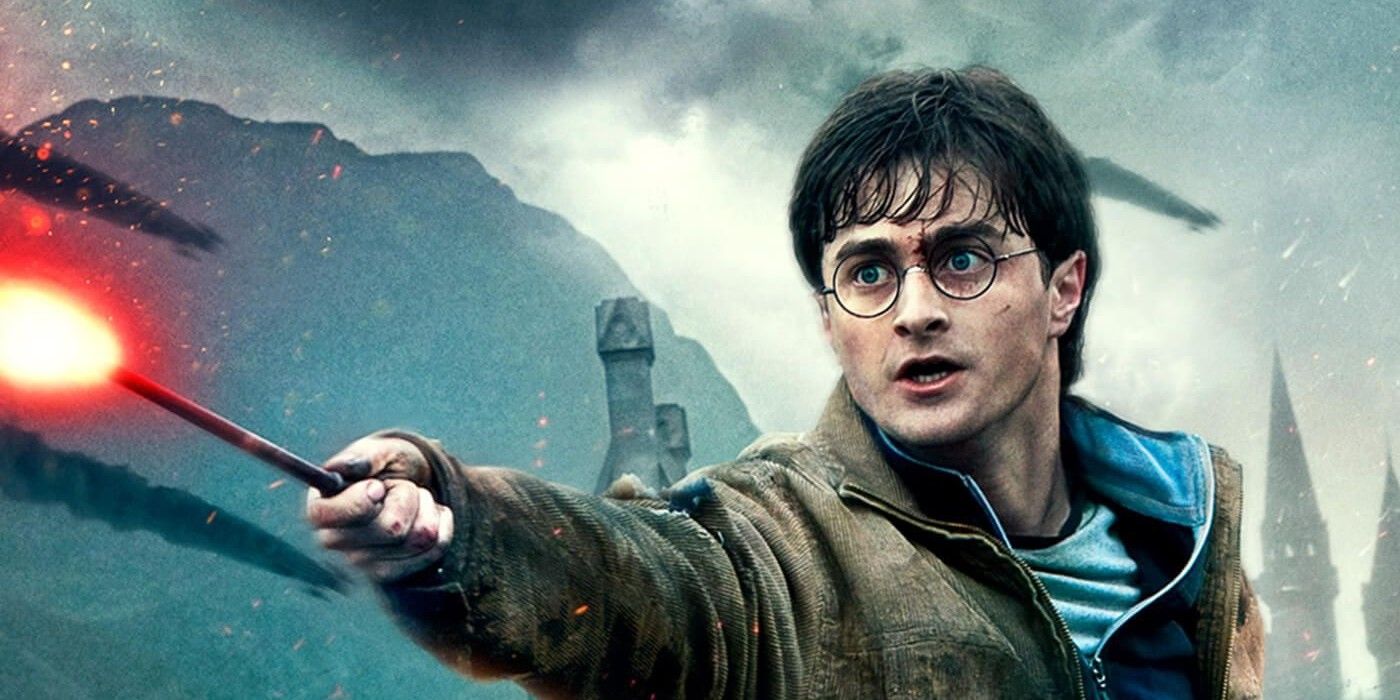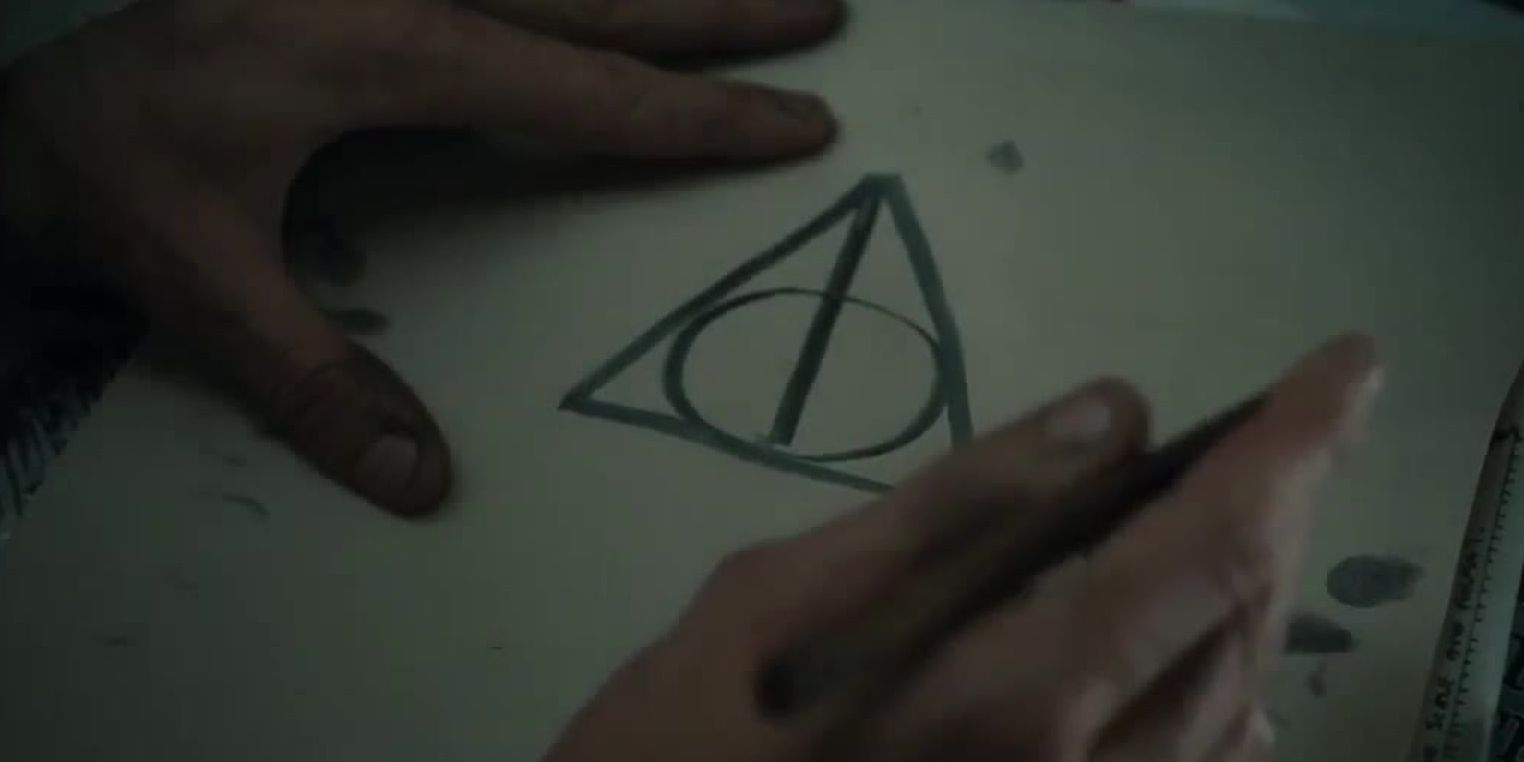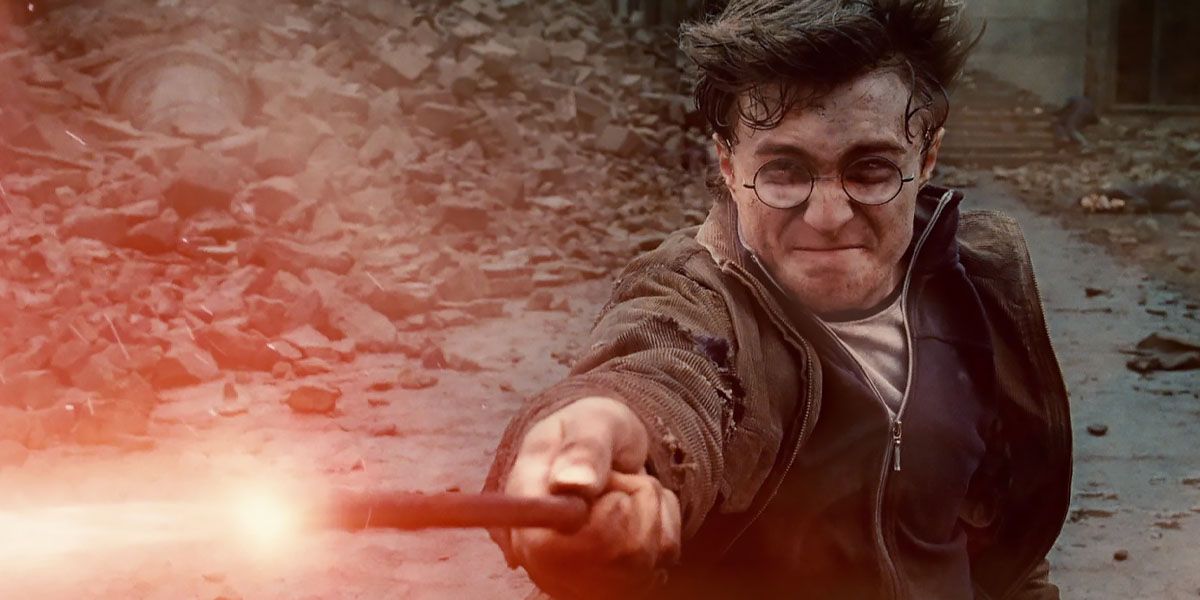It's important to remember the ongoing controversial statements by the creator of the Harry Potter franchise. CBR supports the hard work of industry professionals on properties fans know and love and the wider world of Harry Potter that fans have adopted as their own. You can find CBR's continuing coverage on Rowling here.
The Harry Potter franchise isn't short on iconography, from the title character's lightning bolt scar to snowy owls. But there's one symbol that has a particular significance to the overall plot. The Deathly Hallows, and their symbol, are introduced in the series finale, Harry Potter and the Deathly Hallows. They are made up of three incomparably powerful magical objects that, it's claimed, will make whoever controls them the true Master of Death.
The Deathly Hallows' origin can be found in a children's fable, The Tale of the Three Brothers. In his will, Dumbledore gifts Hermione a copy of the Tales of Beedle the Bard, in which he inscribed the Hallows' symbol. Dumbledore was consumed by his search for the Hallows in his youth, and while he recognized that he could never be their true Master of Death, he left the quest for Harry, who he deemed worthy of the task and burden.
What Are the Three Deathly Hallows?
In Harry Potter, the Deathly Hallows are three magical objects purportedly created by Death for the three Peverell brothers. The Elder Wand is the most powerful wand ever created. Therefore, it has the most publicized history of all the Deathly Hallows. The next object is the Resurrection Stone. While no magic has the power to bring the dead back to life, the Resurrection Stone can bring back a version of someone who has died. They are more than a ghost, but not quite a whole person. The final Hallow is the Invisibility Cloak. This cloak makes its wearer truly invisible, and its magic doesn't wear off or fall victim to other weaknesses.
These three items are remarkable pieces of magic that few can master. Which Hallow a person would choose as the most significant can actually be an interesting personality test, as is demonstrated when each Harry, Ron, and Hermione chose a different Hallow. Ron chose the wand, saying that an unbeatable wand could provide, to some effect, the same ends as the other two Hallows if needed. Hermione chose the cloak because of the trio's history with its usefulness. Harry chose the stone because he desperately seeks comfort and counsel from the many loved ones he has lost, including his parents, Sirius Black, and Dumbledore.
Why Harry Is the Deathly Hallows' True Master
In his youth, Dumbledore attempted to track down the Deathly Hallows and become a master of death. While he did have each Hallow in his possession at some point or another, he never held them all at the same time, nor was he their true master. He won the wand from Gellert Grindelwald in a famous duel. Then he borrowed James Potter's Invisibility Cloak, realizing it for the Hallow it was, though James wasn't aware of its true significance. Dumbledore returned the family heirloom to Harry when he was 11 years old during his first Christmas at Hogwarts. Finally, Dumbledore recognized that Voldemort had ignorantly used the Resurrection Stone as a Horcrux, and in his pursuit of the Hallows, he doomed himself by trying to use the stone before removing Voldemort's protective curses.
Dumbledore was not fit to be the Hallows' master, but Harry Potter was. Harry didn't use the Hallows in an attempt to cheat or overcome death. Instead, he used them as a way to embrace death. He won the Elder Wand's allegiance in a fistfight with Draco Malfoy -- who had won it by disarming Dumbledore before Snape murdered him. That allegiance paid off when Voldemort used the wand in a duel, and it turned on him, recognizing Harry as its master. He inherited the cloak from his father and used it well all his life, including while making his trek into the Forbidden Forrest to sacrifice himself to Lord Voldemort during the Battle of Hogwarts. Finally, Dumbledore passed down to him the Resurrection Stone, which he used to call back his parents, Sirius and Lupin, so they could accompany him on his walk to Voldemort.
Harry used the Hallows to accept his death, so he was without the boastfulness of those drawn to the wand, without the arrogance of those who would use the stone to mock death, and with the humble nature of those who truly understand the power of the cloak. Harry is the true Master of Death not because he believes that death should be avoided but because he truly understands that is inevitable. Becoming the master of the Deathly Hallows in Harry Potter is more than possessing these magical objects; it's about understanding the nature of life and death with respect and dignity in both.



